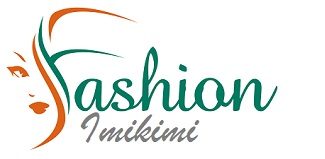Woven, printed, embroidered, leather, rubber/PVC, heat transfer, and hang tags are all types of clothing labels. Let’s now take a look at how to make it simpler to select the option that would work best for your garments or products among all of these options. Keep in mind the following important points when reading and selecting your label type or private label cosmetics wholesale. You need to think about the design, the fabric or material, the level of quality of your product, how the label will be applied, and, of course, your budget.
Woven labels
On a loom, woven labels are produced as a single, seamless piece. Woven labels are durable, high-quality labels that can be applied to almost any item. Because the finished label looks very professional, they are especially good for products that are used frequently or of higher quality. Most of the time, woven labels are made of damask, semi-damask, taffeta, or satin.
Damask
- It is a material with a high-density label. Ours is 80 den. This label is highly recommended for its excellent finish, smoothness, and quality.
- Semi-Damask: This label is also of high quality, but it is thinner than Damask Satin. It has a shiny finish, the weave isn’t as tight, and the details are hard to read.
- Taffeta has a flat finish on this label. The woven is superior in quality to this.
Printed Labels
On the off chance that you review, printed names have the data printed straightforwardly onto the label. On cotton or satin, these labels can be printed digitally or thermally. Additionally, clothing labels made of TPU—thermoplastic polyurethane—have a soft, transparent feel. These are widely used in the swimwear industry and have a distinctive appearance and feel.
The information, on the other hand, will not be as long-lasting as a custom-woven one because it is simply printed onto the material, and it may fade over time. When compared to satin-printed labels, TPU labels will offer a little bit more durability. On the off chance that your piece of clothing or item is “made to endure” you need a name that will keep going similarly as lengthy and printed labels are not suggested as the most ideal choice.
Embroidered labels
These are uncommonly applied to fashion items; printed labels are typically associated with “fast fashion.” These are offered on the website as less expensive label options, primarily for grandmothers who are making household items and do not require high-quality woven labels. Patches are created with embroidery.
Real and Faux Leather
Labels Leather labels are typically applied to the outside of products or garments. They are made of real or synthetic leather, and the embossed or debossed logo creates a three-dimensional effect. They are long-lasting and one-of-a-kindd, which may help distinguish your brand from others. However, you may be limited in your design elements and color choices, and they can be expensive.
Genuine cowhide will fluctuate marginally starting with one label then onto the next as a result of regular components that can’t be controlled. Synthetic leather labels may be a better option if you want a more consistent appearance and color. For items of higher quality, either style of leather label is ideal. Leather labels by private label makeup manufacturers are typically found on leather goods like jeans, jackets, and bags. Additionally, they are excellent for any items that you want to give a rustic appearance.
Rubber, PVC, and Silicone Labels
These labels are a one-of-a-kind alternative to standard labels. They can be used to separate bonus items like key chains or in the same way as woven labels or hang tags. Rubber labels can be molded in a variety of colors and cut into a variety of shapes and sizes. They are weatherproof and extremely long-lasting, making them ideal for outerwear or camping gear. Additionally, these labels look great when hung from purses or backpacks. They would also add a great finishing touch to things that could be described as “Edgy.”
Heat Transfer Labels
If you are unable to sew labels onto your products, heat transfer or tagless labels might be an option. Due to the presence of a strong adhesive bonding material on the back, these labels can be applied using a heat press. The label will adhere to the product because the adhesive becomes tacky when heated. These names are incredible when solace is an element since there is no label holding tight the item and contacting the client’s skin.
Hang tags
In addition to the care labels, hang tags can also be used for advertising and branding. Because they can contain the bar code information that is utilized in inventory management, they are a necessity in retail settings. The applications of Hang Tags are virtually limitless. They can be cut to almost any shape or size because they are printed on cardstock. Any high-resolution image or design can be used because they are printed. A hang tag can also hold more information than a woven clothing label. Typically, hang tags will be removed from an item before it is used. Any item’s overall quality is improved by hanging tags.
Conclusion
You should already be familiar with some of the different kinds of labels that you can choose from, and I hope this will help you choose the best one for your needs. These labels are accessible in expanded shapes and sizes. Because they make labeling simpler and easier, these labels are the ones that are most commonly used. Their printing takes less time and requires less energy.
The print on the labels by label-making companies needs to be crisp and clear so that it can be read until the product reaches its destination, and they also need to be strong enough to withstand the harsh conditions during transportation. Another advantage of these labels is that they can be produced quickly while still maintaining their quality. They are used by many institutions in addition to retail and industrial applications. You can either buy them at local stores or order them online to get them.










